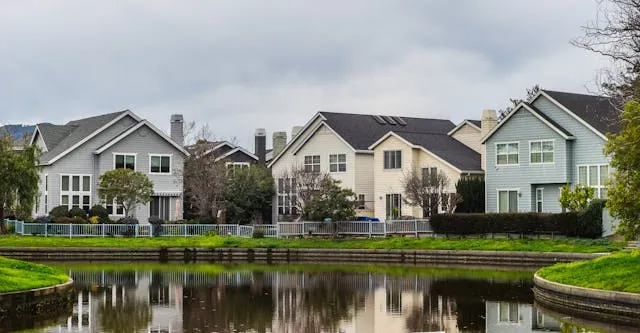Modern suburban living in Australia is rapidly transforming into a lifestyle choice defined by comfort, community, sustainability, and convenience. As cities become more crowded and expensive, Australian families, professionals, and retirees are increasingly turning to the suburbs as a new way of life that balances urban advantages with peaceful surroundings. This trend is not just reshaping how people live—it’s revolutionizing the housing market, infrastructure, and even social dynamics.
Also Read: Smart Approaches to Sustainable Landscaping
The Evolution of the Australian Suburb
Historically, Australian suburbs were seen as sleepy residential areas, far removed from the excitement of the city. Today, however, they represent vibrant, self-sufficient communities equipped with modern amenities, quality schools, shopping hubs, healthcare facilities, and efficient public transport. With urban planners and developers focusing on lifestyle-centric designs, modern suburbs now offer a dynamic mix of urban sophistication and serene living.
From Brisbane to Melbourne, Sydney to Perth, suburbs have become smart, connected, and inclusive. Many feature master-planned communities that offer walking trails, parks, community centres, and shared recreational spaces—essentials for a healthy, balanced lifestyle.
Housing Options for Every Stage of Life
One of the defining features of modern suburban living in Australia is the diversity of housing options. Whether you’re a first-home buyer, a growing family, or a downsizing retiree, there’s something for everyone.
Suburban developments now include a variety of properties such as:
- Townhouses and duplexes for young professionals or small families.
- Detached family homes with generous backyards ideal for children and pets.
- Apartments with modern finishes and shared facilities like gyms and pools.
- Eco-friendly smart homes built with sustainability in mind.
These housing models are designed not just for shelter, but for living well—offering smart layouts, natural lighting, energy efficiency, and seamless indoor-outdoor flow.
Community and Connectivity
Community engagement plays a significant role in suburban life. Australians value neighbourhood bonds, and modern suburbs encourage this through shared events, community gardens, local sports teams, and co-working spaces. These initiatives help build strong social connections and a sense of belonging.
Moreover, suburbs are increasingly becoming more connected. High-speed internet access, local transportation networks, and proximity to major freeways ensure that suburban residents stay plugged into the larger urban ecosystem. Many people now enjoy the best of both worlds: the calm of suburban life with easy access to city centres for work or leisure.
Sustainability and Green Living
With growing awareness around climate change, sustainability is a key pillar of modern suburban planning. Australian suburbs are now incorporating:
- Solar-powered homes and energy-efficient appliances.
- Recycled water systems and water-wise landscaping.
- Electric vehicle charging stations.
- Cycling paths and pedestrian-friendly infrastructure.
These eco-conscious features not only reduce environmental impact but also lower household bills—making suburban living financially appealing.
Green spaces are another hallmark of this lifestyle. Parks, nature reserves, and tree-lined streets aren’t just beautiful—they improve mental health, encourage physical activity, and offer children a safer place to play.
Work-Life Balance in the Suburbs
Modern suburban living in Australia strongly supports a balanced lifestyle. With the rise of remote work and hybrid job models, many people now prefer homes that can accommodate a home office or a study nook. Suburban properties offer the space and quiet needed for productive work-from-home arrangements.
Additionally, suburbs often have local cafes, fitness centres, child care facilities, and weekend markets—ensuring everything you need is just around the corner. This shift has redefined the daily grind, giving Australians more time for family, hobbies, and self-care.
The Rise of Lifestyle Suburbs
Some suburbs are now being specifically marketed as “lifestyle suburbs.” These areas prioritize quality of life above all, offering residents:
- Scenic walking and bike trails
- Boutique shopping precincts
- Fine dining and artisan cafes
- Arts and cultural events
- Wellness centres and spas
Examples include Byron Bay in New South Wales, Mount Eliza in Victoria, and Noosa in Queensland. These locations offer beachside tranquility or countryside charm while maintaining access to urban conveniences. For many Australians, moving to a lifestyle suburb is not a step back from city life but a giant leap toward personal fulfilment.
Smart Suburbs: Embracing Technology
Smart technology is also playing a key role in modern suburban development. From smart home automation to community-wide surveillance systems and digital noticeboards, these tech-driven initiatives enhance security, efficiency, and convenience.
Local councils are using data analytics to improve waste management, energy usage, and urban planning. Meanwhile, residents benefit from apps that track public transport, manage utilities, or even connect with neighbours digitally.
Lifestyle Suburbs on the Rise
Across Australia, certain suburbs have emerged as lifestyle destinations in their own right. These areas are designed to offer residents the ultimate suburban experience—combining natural beauty, modern amenities, and a tight-knit community.
One such standout development is ariala springwood, a modern residential community that exemplifies the best of contemporary suburban living. Offering smartly designed homes, lush green spaces, and easy access to retail and transport, this community has quickly gained popularity among families and professionals alike.
Investment Potential of Modern Suburbs
For investors, Australian suburbs offer substantial growth potential. As demand for suburban living increases, so does property value. Many suburbs have seen consistent capital growth over the past decade, outperforming some inner-city areas.
Suburbs close to schools, business hubs, and transport corridors are particularly attractive. For example, in Sydney, suburbs like Marsden Park and Schofields have emerged as high-growth zones. In Melbourne, suburbs such as Clyde North and Mickleham are drawing attention due to affordable prices and robust infrastructure plans.
Challenges to Consider
Despite its many benefits, modern suburban living is not without challenges. Long commutes can still be an issue in outer suburbs lacking adequate transport. Urban sprawl can strain resources if not managed well. Also, rapid development can sometimes disrupt the environmental balance.
However, government initiatives and community involvement are addressing these concerns through better zoning laws, improved transport projects, and sustainable development strategies.
Conclusion
Modern suburban living in Australia is more than a housing trend—it’s a lifestyle revolution. Offering a harmonious blend of community, sustainability, affordability, and connectivity, Australian suburbs are redefining what it means to live well.
As more people choose space, comfort, and lifestyle over the hustle and bustle of the city, suburban life is no longer a compromise. It’s the new standard. For anyone seeking a fresh start or a better quality of life, embracing modern suburban living in Australia may be the best move you’ll ever make.



